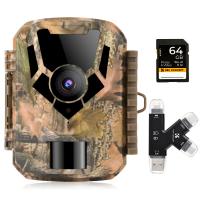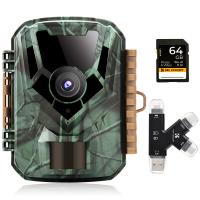How To Delete Sd Card On Mac?
Deleting data from an SD card on a Mac is a common task that many users need to perform for various reasons, such as freeing up space, preparing the card for a new device, or ensuring that sensitive information is completely erased. This article will guide you through the process of deleting data from an SD card on a Mac, covering different methods and addressing common issues that may arise.
Understanding the Basics

Before diving into the steps, it's important to understand the basics of SD cards and how they interact with your Mac. An SD card (Secure Digital card) is a type of memory card used in various devices like cameras, smartphones, and tablets. When you insert an SD card into your Mac, it appears as an external drive, allowing you to manage its contents just like any other storage device.
Methods to Delete Data from an SD Card on a Mac

There are several methods to delete data from an SD card on a Mac, each with its own advantages and use cases. Here, we'll cover the most common methods:
1. Using Finder
2. Using Disk Utility
3. Using Terminal
Method 1: Using Finder

Finder is the default file manager on macOS, and it provides a straightforward way to delete files from your SD card.
1. Insert the SD Card: Insert the SD card into the SD card slot on your Mac or use an external card reader.
2. Open Finder: Click on the Finder icon in the Dock to open a new Finder window.
3. Locate the SD Card: In the Finder sidebar, you should see your SD card listed under "Devices" or "Locations." Click on it to view its contents.
4. Select Files: Select the files or folders you want to delete. You can select multiple items by holding down the Command key while clicking.
5. Delete Files: Right-click on the selected items and choose "Move to Trash" from the context menu. Alternatively, you can drag the selected items to the Trash icon in the Dock.
6. Empty Trash: To permanently delete the files, right-click on the Trash icon in the Dock and select "Empty Trash."
Method 2: Using Disk Utility

Disk Utility is a powerful tool that allows you to manage disks and storage devices on your Mac. It can be used to erase an entire SD card, which is useful if you want to completely wipe all data.
1. Insert the SD Card: Insert the SD card into the SD card slot on your Mac or use an external card reader.
2. Open Disk Utility: Open Disk Utility by searching for it in Spotlight (Command + Space) or by navigating to Applications > Utilities > Disk Utility.
3. Select the SD Card: In the Disk Utility sidebar, locate and select your SD card. Be careful to select the correct device to avoid erasing the wrong one.
4. Erase the SD Card: Click on the "Erase" button in the toolbar. A dialog box will appear, allowing you to choose the format and name for the SD card. For most purposes, "ExFAT" or "MS-DOS (FAT)" are good choices for the format.
5. Confirm Erase: Click "Erase" to confirm. Disk Utility will erase the SD card, removing all data and reformatting it.
Method 3: Using Terminal
For advanced users, Terminal provides a command-line interface to manage files and storage devices. This method is useful for those who prefer using commands or need to automate the process.
1. Insert the SD Card: Insert the SD card into the SD card slot on your Mac or use an external card reader.
2. Open Terminal: Open Terminal by searching for it in Spotlight (Command + Space) or by navigating to Applications > Utilities > Terminal.
3. List Disks: Type the following command to list all connected disks:
```
diskutil list
```
Identify your SD card from the list. It will be labeled something like `/dev/disk2`.
4. Unmount the SD Card: Before erasing, you need to unmount the SD card. Use the following command, replacing `disk2` with the appropriate identifier for your SD card:
```
diskutil unmountDisk /dev/disk2
```
5. Erase the SD Card: Use the following command to erase the SD card, replacing `disk2` with the appropriate identifier:
```
sudo diskutil eraseDisk FAT32 SDCARD MBRFormat /dev/disk2
```
This command will erase the SD card, format it as FAT32, and name it "SDCARD." You can adjust the format and name as needed.
Common Issues and Troubleshooting
While deleting data from an SD card on a Mac is generally straightforward, you may encounter some issues. Here are common problems and their solutions:
1. SD Card Not Recognized: If your SD card is not recognized by your Mac, try using a different card reader or port. Ensure that the SD card is not write-protected by checking the lock switch on the side of the card.
2. Permission Errors: If you encounter permission errors when trying to delete files, ensure that you have the necessary permissions. You can check and modify permissions by right-clicking on the SD card in Finder, selecting "Get Info," and adjusting the permissions under the "Sharing & Permissions" section.
3. Data Recovery: If you accidentally delete important files, you can use data recovery software to attempt to recover them. Popular options include Disk Drill, EaseUS Data Recovery Wizard, and PhotoRec.
Deleting data from an SD card on a Mac is a simple process that can be accomplished using Finder, Disk Utility, or Terminal. Each method has its own advantages, and the best choice depends on your specific needs and comfort level with the tools. By following the steps outlined in this article, you can effectively manage your SD card's contents and ensure that your data is securely erased when needed. Whether you're freeing up space, preparing the card for a new device, or safeguarding sensitive information, these methods will help you achieve your goals efficiently.










There are no comments for this blog.